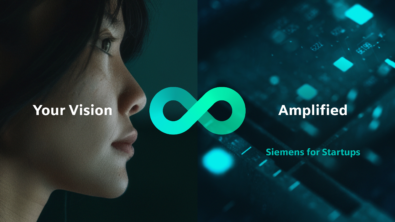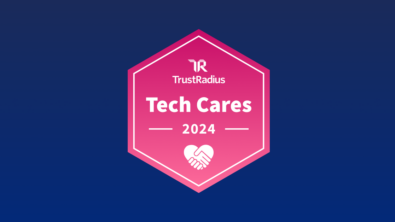Meet PACE Team 1 Student Engineers & Their Innovative Mobility Device
At the PACE Annual Forum last month, seven teams from 32 universities addressed urban mobility in the PACE Portable Assisted Mobility Device (PAMD) project – a two-year global collaboration project involving institutions in 11 countries. I’d like you to meet some of the members of Team 1 and their PAMD.
Meet STIGO.
Each PACE team is made up of several universities. Meet Team 1 representing Hongik University, Inha University, Northwestern University and Tuskegee University. Below is an interview with these three student engineers from the lead school Hongik University.
Meet Ms. Hyeryung Hur
(Industrial Styling design)
Meet Mr. Gwang-hyun Lee
(Engineering)

Meet Mr. Ky-hyun Kim
(Manufacturing and Marketing)
These students presented their PAMD to a panel of judges, highlighting their market research, design iterations and engineering and manufacturing methods. They’ve shared their slides so you can see too:
[slideshare id=25428038&doc=paceteam1finalpresentationjuly2013-130820140616-phpapp01]
Tell us about yourselves.
Hur: “I am Hyeryung Hur (also called Dorothy) and am studying Industrial Design in Hongik University and plan to graduate in February 2014. Designers and engineers are closely related in society. I have recognized that relationship is really important as a designer since I started to study transportation design in 2010. Since then, I could get some opportunities in my school by participating in several collaboration projects to experience and learn the way to adjust my ideas and designs and convince engineers like this year’s PACE PAMD project.”
Kim: “My name is Ki-hyun from Hongik University and I was in charge of market research and manufacturing part in this PAMD project. Since my major is industrial engineering, I have learned and applied variety of marketing and manufacturing strategies and deployment methods. I am currently senior, so I am supposed to graduate next summer. I didn’t have much knowledge about engineering until the end of high school. I liked both math and science at that time, but I thought those subjects are not helpful per se. Meanwhile, I felt engineering is making something new by using math and science and I thought that it can be helpful for my future. That is why I selected engineering for my major.”
Lee: “My name is Gwanghyeon Lee from Hongik University. Since I was young I always have been curious about how machines work and how to make them. That motive is what made me pursue engineering as my major. I am currently studying mechanical engineering and in my third year of university.”
Tell us about the PAMD project and your roles on the team.
Hur: “I did overall design, set key concepts and visualized the STIGO in design part. Also I managed the team and presented in the forum.”
Kim: “My role was to conduct research in market research and business plan parts and put together into the final report and presented in the forum.”
Lee: “I was responsible for engineering part, particularly in the powertrain subject. Also I combined all engineering part we have carried out and presented in the forum.”
You won the top award for collaboration. How did you collaborate with the other universities on your team?
“We collaborated with three other universities – Inha University in Korea and Northwestern University, and Tuskegee University in America and three different majors – mechanical engineering, industrial design and industrial engineering. Korean students had face-to-face meetings every Wednesday in Hongik University from January. Korean and American students also shared ideas, research and outputs online and we always shared opinions freely by using a mobile messenger. In March, American students visited Korea for a week so we could physically work together and share our opinion more actively. Each member of our team cooperated efficiently and we thought it is the reason we won the top award for collaboration.”
Your team won the top award also for most ready for production – both in product engineering and manufacturing. What was the key to winning those awards?
Kim: “I think that active communication was one of the key issues to lead a good result. We used NX program and it helped us not only to do the works efficiently but also strengthen the communication skills among team members. Fortunately this created synergy effect and brought forth good result.”
Lee: “I think nowadays all industrial products should be made by cooperation of experts from diverse fields. Thus, cooperating and communicating with other fields are most important as much as studying my own major. This PAMD project offered the useful experience of communicating with other majors.”
Did you learn any lessons through the project/process?
Hur: “It was the first time for me to manage this huge collaboration project’s schedules and process at once. So through this project, I have learned not only the way to understand engineers’ way of thinking and working process but also manage and adjust the balance of each part’s schedule and opinion in my team. Also giving a presentation in front of the audience at the forum was an impressive experience.”
Kim: “This project was the biggest project that I’ve experienced so far. Over collaborating with both different major and foreign students, I could learn how to arbitrate among differences of opinions. Sometimes it was not easy to control the whole group into the right direction, however concession and compromise among group members facilitated us to reach an ultimate goal. In this regard I learned not only the sufficient interchange of opinions and views but to keep objective point of view can lead the best result.”
Lee: “Through this project, I got plenty chances to talk and share opinions with students from various fields and countries. It made my vision widen and the sharing knowledge beyond border gave me an impressive experience.”
What are your dream job(s) after graduation?
Hur: “My dream job is a car designer. My design language is simple like STIGO’s. I want to be one of key designer in future transportation design field. Keep watching me!
Kim: “I’m particularly interested in UX category. Actually my dream is to make people happy and comfortable while using the products. Concurrently, users can also meet with a new experience and I hope it can make the world a better place. So I want to get my job as UX related department employee in IT industry in the future.”
Lee: “I’m interested in and care about the environment a lot. So I have a desire to make products which do not destroy the environment in the future.”
Siemens provides PACE schools with software for their classrooms and real-world projects like the PAMD. Team 1 designed the STIGO’s 3D frame structure with NX software.
Congrats and thank you Team 1 for sharing these responses and your PAMD project slides. We look forward to seeing how the project develops in year 2.
For more on PACE, visit pacepartners.org. For more on trends in mobility, you might be interested in some of the Siemens stories like The Future of Getting Around or urbanDNA.
– Dora


